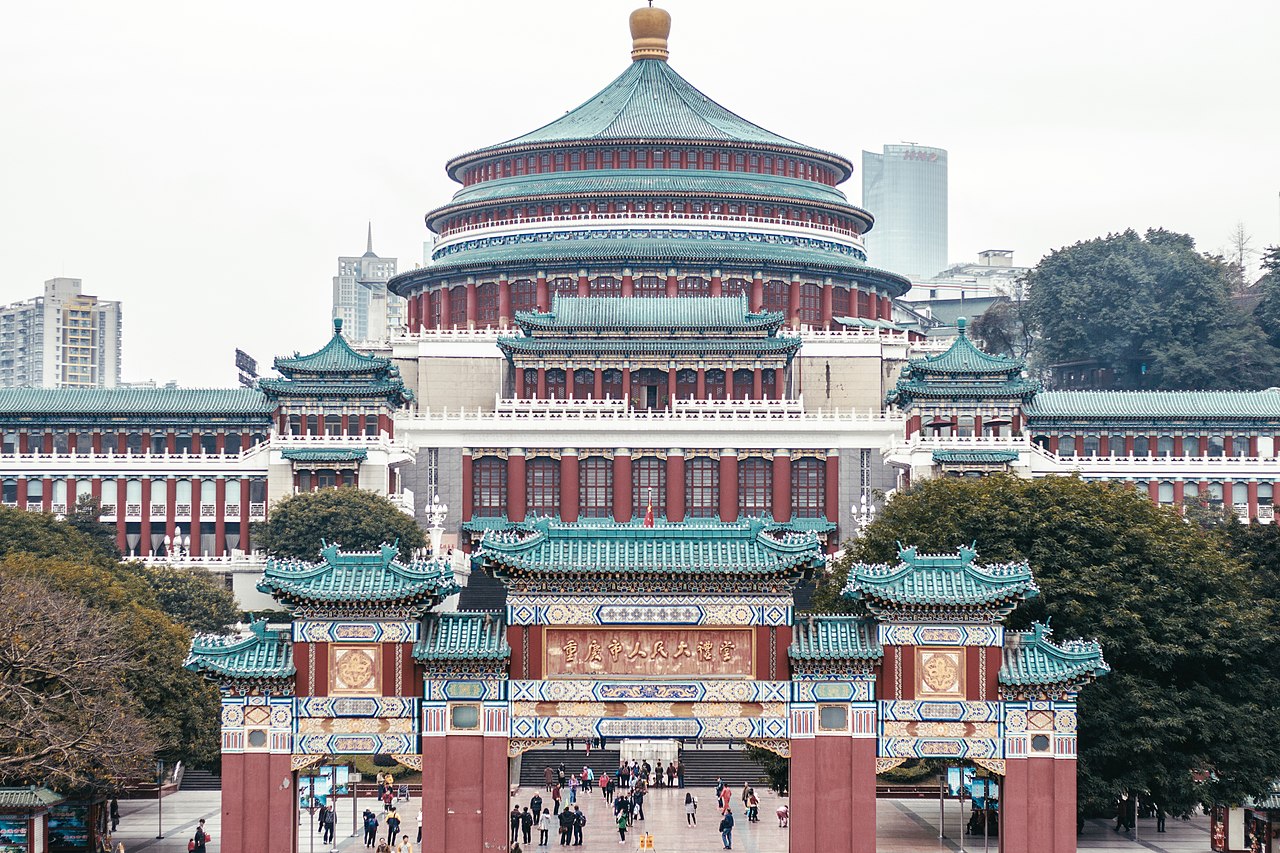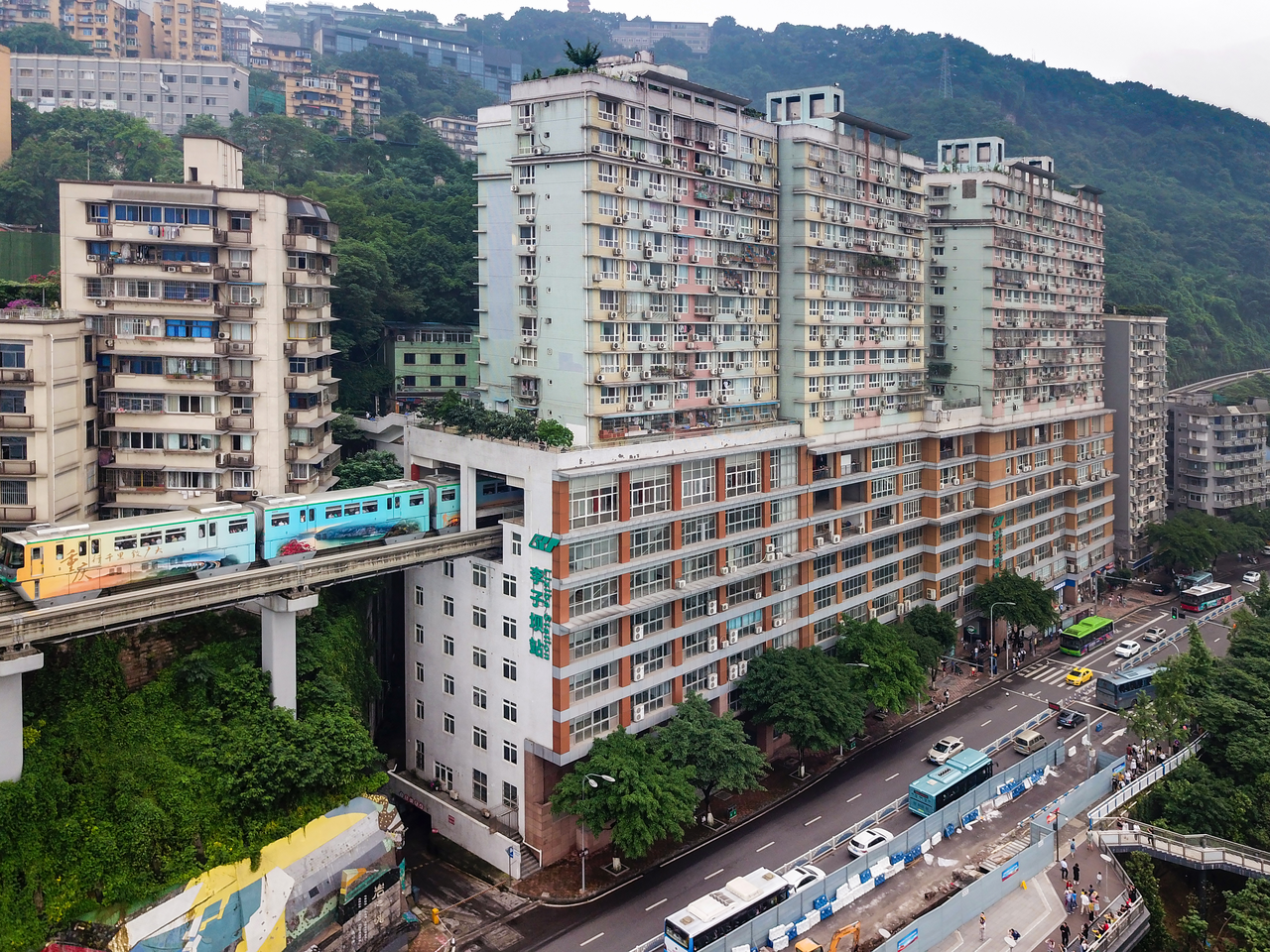12 January 2025
The City with the Largest Population in the World: Welcome to Chongqing

Chongqing: if you are not from Asia or a geography enthusiast, the name may not mean a great deal to you. However, this city in southwestern China now boasts the largest urban population in the world – and it has an infrastructure and architecture that clearly demonstrate that… an awful lot of people live there. In fact, the figure currently stands at 32,054,159. (picture credit)

 Perhaps that's why their floating restaurants are a little larger than you might ordinarily expect.
Perhaps that's why their floating restaurants are a little larger than you might ordinarily expect.

 Of course there are other megacities in the world that compete with Chongqing for the crown – with Asian cities such as Tokyo, Delhi and Shanghai in the top ten. All have claims in terms of population measured by one factor or another, but if you measure it strictly by the number in the city proper (that is within its administrative boundaries) then Chongqing is in the lead by a long chalk.
Of course there are other megacities in the world that compete with Chongqing for the crown – with Asian cities such as Tokyo, Delhi and Shanghai in the top ten. All have claims in terms of population measured by one factor or another, but if you measure it strictly by the number in the city proper (that is within its administrative boundaries) then Chongqing is in the lead by a long chalk.

 Yet this could well be a pyrrhic distinction for any city – although it has the awe factor, it could just as easily evoke a sense of discomfort or disapproval. These pictures alone could inspire some awe – the city is simply beyond huge. Such sheer scale and density may leave one marvelling at human achievement, yet questioning the cost of such grandeur on sustainability and the human experience.
Yet this could well be a pyrrhic distinction for any city – although it has the awe factor, it could just as easily evoke a sense of discomfort or disapproval. These pictures alone could inspire some awe – the city is simply beyond huge. Such sheer scale and density may leave one marvelling at human achievement, yet questioning the cost of such grandeur on sustainability and the human experience.
 The multitudes that inhabit this city come in their tens of millions. Chongqing is the only Chinese municipality with over 30 million registered inhabitants. Although these pictures might bely that, this number encompasses a large rural population as well as those living in the cramped high rises in the city centre – and there are 22 million of them there. Plus the municipality covers an area about the size of Czechia. Many argue that, as such, the place is more like a province than a city but with 8 counties and 26 districts its immensity cannot be disputed.
The multitudes that inhabit this city come in their tens of millions. Chongqing is the only Chinese municipality with over 30 million registered inhabitants. Although these pictures might bely that, this number encompasses a large rural population as well as those living in the cramped high rises in the city centre – and there are 22 million of them there. Plus the municipality covers an area about the size of Czechia. Many argue that, as such, the place is more like a province than a city but with 8 counties and 26 districts its immensity cannot be disputed.
 Sometimes the boundary between the urban and the rural is abrupt to say the very least.
Sometimes the boundary between the urban and the rural is abrupt to say the very least.
 ...And you might want more than Google Maps to navigate your way around the road system.
...And you might want more than Google Maps to navigate your way around the road system.
 So if you want a night at the opera (above), maybe get a cab.
So if you want a night at the opera (above), maybe get a cab.
 While we are looking at things cultural, take a look at The Great Hall of the People.
While we are looking at things cultural, take a look at The Great Hall of the People.


 Did I mention it also has the world’s longest and busiest monorail system with 70 stations? It is famous for going through buildings, too! All of this gives the city an atmosphere reminiscent of Fritz Lang’s Metropolis.
Did I mention it also has the world’s longest and busiest monorail system with 70 stations? It is famous for going through buildings, too! All of this gives the city an atmosphere reminiscent of Fritz Lang’s Metropolis.

 There's a tramway too. But of course, there would be.
There's a tramway too. But of course, there would be.
 The buildings seem to go on forever.
The buildings seem to go on forever.

 The name Chongqing (重庆) translates to "Double Celebration" or "Repeated Celebration" in English. Although the city had a few different names previously, the one we have today originates from the Song Dynasty (960–1279). Prince Zhao Dun, who was later Emperor Guangzong, was appointed the ruler of Chongqing. Shortly after, he ascended to the throne, and the city was renamed Chongqing to commemorate the "double celebration" of his two major honours: becoming a prince and then an emperor.
The name Chongqing (重庆) translates to "Double Celebration" or "Repeated Celebration" in English. Although the city had a few different names previously, the one we have today originates from the Song Dynasty (960–1279). Prince Zhao Dun, who was later Emperor Guangzong, was appointed the ruler of Chongqing. Shortly after, he ascended to the throne, and the city was renamed Chongqing to commemorate the "double celebration" of his two major honours: becoming a prince and then an emperor.
It also has a great deal of more recent history: from 1937-1945 it was the wartime capital for the Republic of China.

 The city became a critical political and military stronghold, as well as a refuge for millions fleeing the advancing Japanese forces. Chongqing suffered relentless aerial bombardments but the people came through, earning it the nickname "City of Heroes" for its resilience.
The city became a critical political and military stronghold, as well as a refuge for millions fleeing the advancing Japanese forces. Chongqing suffered relentless aerial bombardments but the people came through, earning it the nickname "City of Heroes" for its resilience.
 It has a something to help people remember the war tucked away among the towers - The People's Liberation Monument. Despite the devastation, it emerged as a symbol of resistance and determination, hosting key government offices, cultural institutions, and international delegations that supported China's fight against occupation. This period left an indelible mark on the city's identity, blending its modern development with the weight of its historical legacy.
It has a something to help people remember the war tucked away among the towers - The People's Liberation Monument. Despite the devastation, it emerged as a symbol of resistance and determination, hosting key government offices, cultural institutions, and international delegations that supported China's fight against occupation. This period left an indelible mark on the city's identity, blending its modern development with the weight of its historical legacy.
 Today it is a thriving, busy, crowded place. It is designated as one of China’s National Central Cities, serving as a major hub for finance in the Sichuan Basin and the upper reaches of the Yangtze River, as well as a key centre for manufacturing and transportation (who wouldn’t want to ride that monorail!).
Today it is a thriving, busy, crowded place. It is designated as one of China’s National Central Cities, serving as a major hub for finance in the Sichuan Basin and the upper reaches of the Yangtze River, as well as a key centre for manufacturing and transportation (who wouldn’t want to ride that monorail!).

 Chongqing is also the headquarters of Changan Automobile, one of China’s "Big Four" car manufacturers. As of 2023, the city hosts 12 foreign consulates, placing it fifth in China after Beijing, Shanghai, Guangzhou, and Chengdu. Chongqing ranks among the world’s top 40 cities for scientific research output, according to the Nature Index, and is home to prominent institutions such as Chongqing University, Southwest University, and Chongqing University of Posts and Telecommunications.
Chongqing is also the headquarters of Changan Automobile, one of China’s "Big Four" car manufacturers. As of 2023, the city hosts 12 foreign consulates, placing it fifth in China after Beijing, Shanghai, Guangzhou, and Chengdu. Chongqing ranks among the world’s top 40 cities for scientific research output, according to the Nature Index, and is home to prominent institutions such as Chongqing University, Southwest University, and Chongqing University of Posts and Telecommunications.

 The city isn't very used to tourists from outside China, but as its reputation grows, so do the number of tourists from all over the globe. Would you take a vacation to Chongqing?
The city isn't very used to tourists from outside China, but as its reputation grows, so do the number of tourists from all over the globe. Would you take a vacation to Chongqing?



 Or Bladerunner, perhaps?
Or Bladerunner, perhaps?








